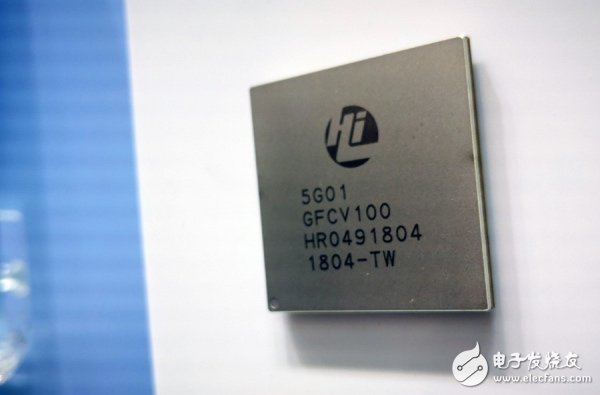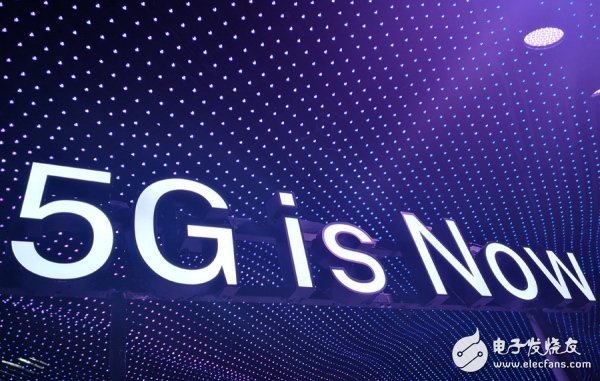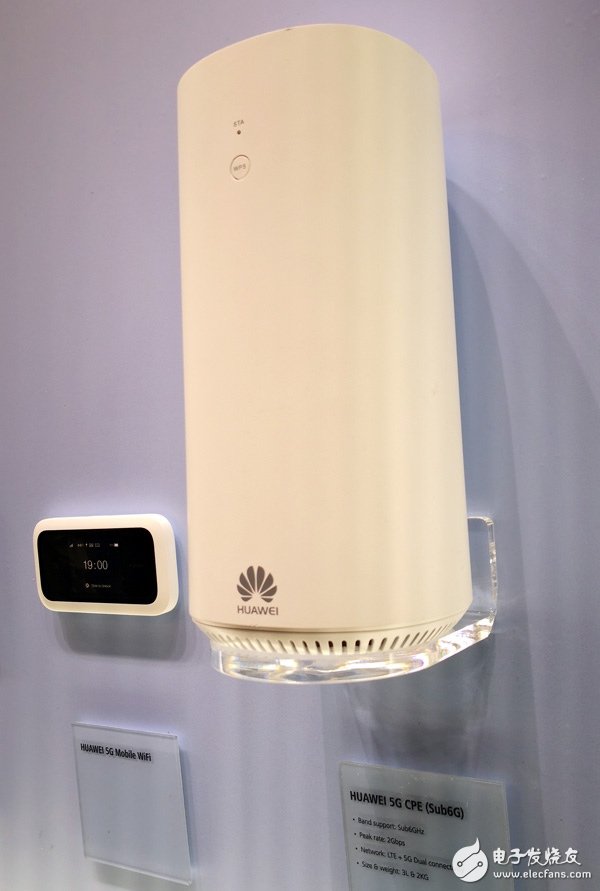One of the biggest attractions of technology companies' conferences is to constantly create "surprise" for the industry and users, such as "One More Thing" in the Steve Jobs era.
Huawei's 2018MWC conference "One More Thing" is the world's first 5G commercial chip - Balong 5G01 (Balong 5G01) and the first 3GPP standard 5G commercial terminal based on the chip - Huawei 5G CPE (Consumer Premise Equipment, 5G users) terminal).
Due to the third product link in the conference, many foreign media science and technology journalists on the scene were obviously inadequately prepared. The manuscript that was prepared to “grab†was hurriedly revised again. After all, the first standard version of the 3GPP 5G NSA was frozen for only two months. Huawei officially released the world's first 5G commercial chip and 5G commercial terminal at this time. The high efficiency is indeed beyond the expectations of the industry and the media.
Yu Chengdong, CEO of Huawei's consumer business, said at the press conference: "The release of Huawei's first 3GPP standard 5G commercial chip and terminal is a key breakthrough for the global 5G industry, which means that the 5G era has arrived."
The secret of "Baron 5G01"When mentioning the "Barong chip", most ordinary users will feel strange, but it is one of the core components of the Hessian Kirin chip.
"Kirin chip" is actually a mobile phone SoC, which is divided into two parts: BP (baseband processor) and AP (application processor). Baron is located in the BP part of Kirin, which directly determines the Hessian Kirin chip. Communication specifications and standards are progressing. At the same time, as the communication platform of mobile terminals, Baron can also appear in various mobile terminals, such as CPE and data cards.
Regardless of the function machine or the smart phone era, the key to determining the quality of the call, the strength of the signal, and the speed of the network connection is the baseband chip technology capability. For example, MediaTek's share of the mainland mobile phone market in the first half of 2017 has fallen sharply. It is a misjudgment of China Mobile's emphasis on LTE Cat.7 4G terminals, which has caused its core partners to rely on the Qualcomm camp. For example, although Apple is a self-developed chip, it can't solve the problem of core baseband chip itself. It has been using Qualcomm's baseband chip. In recent years, in order to check and balance, Apple has also adopted Intel's baseband chips. However, because Intel's chip specifications and performance are not as good as Qualcomm chips, Apple has to "low or not high", reducing the communication specifications and performance of its entire machine, affecting the consumer experience. With the intensification of litigation in recent years with Qualcomm, it is reported that Apple is preparing to hand over the orders for the new iPhone's baseband chips to Intel in 2018, with the goal of “going to high-passâ€. Such a result will inevitably have an adverse impact on the competitiveness of the iPhone.
In fact, the baseband chip technology capability directly determines the competitive strength and market structure of the communications industry, including smart phones, and only the baseband chip communication specifications are raised to the world's top high-end clubs that can become mobile phone chips.
Huawei is a communications company, relying on long-term huge R&D investment. Huawei has made a difficult start in the 1G era in key communication technologies, to the chaser in the 2G era, and to the industry leader in the 3G era, becoming the industry leader in the 4G era. And Baron is a direct manifestation of Huawei's continuous breakthrough in key communication technologies. Based on Barron's rapidly growing communication strength, the Kirin series of chips will have industry-leading capabilities in global communications and will continue to accelerate the core product advantages and iteration speed of Huawei's terminal services.
For example, in the 3G era, Baron launched an Internet card to help Huawei's terminal equipment successfully enter the world's top operators, and for this reason Huawei's own brand of smart phone business has opened the barrier. In the 4G era, the Baron team has become an important promoter of global LTE standards and industrialization with its deep technical accumulation and R&D advantages. Balong chips have begun to refresh the global record of LTE 4G industry. For example, Baron 700 is the first in the industry to support LTE TDD/FDD. Baron 750 is the first to support LTE Cat12/13 (UL), the world's first commercial 4CA (four-carrier aggregation), the world's first commercial 4x4 MIMO, download peak rate of 600Mbps.
The Haisi Kirin 970 chip released in September 2017, the two biggest features are the world's first smartphone AI chip with built-in independent NPU (neural network unit); the other is the integration of the Baron 760, the industry's first support The mobile phone SoC of LTE Cat.18 has a peak download rate of 1.2 Gbps, which is the first commercial dual-card dual VoLTE. Qualcomm and its similar Snapdragon 845 processor (AI+LTE Cat.18) were released in December of the same year. The first commercial product, the Samsung S9, was released nearly half a year later than Huawei's Mate 10.
In the smart phone industry, the “generational difference†in half a year is enough to complete the “de-dimensional strike†of mobile phone companies, especially for the vast majority of Chinese mobile phones lacking core chip capabilities. For example, starting in 2012, relying on the rapid breakthrough of core chip technology by Kirin and Baron, Huawei has maintained its leading pace in the flagship new product release, while other Android mobile phone companies can only follow the tempo and business policies of Qualcomm chips, and indirectly. Promoted Huawei's continuous "explosion" from Mate 7. From the current point of view, even if Lei Jun went to Hawaii to release the platform for Qualcomm Xiaolong 845, but the real start is still Samsung S9, Xiaomi's first Xiaolong 845 mobile phone really get the chip to achieve mass production until the April-May this year. At this time, the release time of the next-generation chip of Kirin is already very close, and this "generational difference" effect will further intensify with the arrival of 5G.

Huawei's first 5G commercial chip, the Balong 5G01, released at 2018MWC, is the embodiment of this "generational" signal. Yu Chengdong officially announced at the press conference that Huawei's first 5G smartphone will be launched in the fourth quarter of 2019. It is earlier than the time when China's three major operators officially built 5G networks in 2020. The confidence and confidence also come from Barong's 5G chip. Constant breakthroughs in key technologies and successful commercial use.
The world's first 5G network + chip + terminal capabilityChina Mobile announced at 2018MWC that it will build the world's largest 5G trial network in 2018 and officially announced the 518 5G scale experimental plan, which means that Chinese operators' strategy for 5G network will be more aggressive than expected.
The 5G network and terminal are the two basic conditions for 5G commercial. For the terminal, the chip is the most important, and is the key link for the development and maturity of the 5G industry.

As the world's largest communications equipment company, Huawei is the main promoter of global 5G international standards development. Since 2009, it has launched 5G research and development, and has invested at least 600 million US dollars in 5G research and innovation. It has established 11 globally. 5G Research Center. At present, the peak rate of 5G network measured by Huawei in the 5G experimental network has reached 20.25Gbps, the delay is as low as 0.33ms, and the number of devices that can be connected per square kilometer reaches 2.17 million, which fully meets the requirements of the ITU standard. Huawei has cooperated with more than 30 top operators in China, including China Mobile, China Telecom, China Unicom, Vodafone, SoftBank, T-Mobile, BT, and Telefonica.
The release of Baron 5G01 and Huawei 5G CPE means that Huawei has become the world's first communications company with 5G network + chip + terminal capabilities.
From the data point of view, based on 3GPP chip of 3GPP standard, Balong 5G01 supports the mainstream 5G frequency band, including Sub6GHz (low frequency) and mmWave (high frequency), theoretically can achieve data download rate of up to 2.3Gbps, support NSA (Non Standalone) 5G non-independent networking, that is, 5G network architecture on LTE) and SA (Standalone, 5G independent networking). Balong 5G01 is the first commercial chip released after the 5G standard freeze, marking Huawei's first breakthrough in the commercial bottleneck of 5G terminal chips, becoming the world's first company to provide end-to-end 5G solutions.

Huawei 5G CPE is classified into low-frequency (Sub6GHz) CPE and high-frequency (mmWave) CPE. Huawei 5G low-frequency CPE weighs 2kG and is only 3L in size. It can be placed indoors at will. In fact, the peak downlink rate can reach 2Gbps, which is 20 times of the peak rate of 100M fiber. It can download an episode of network drama in less than 1 second. Support various types of high-definition video and entertainment applications such as VR HD online video and VR network games based on 5G network, and compatible with 4G and 5G networks.
CPE has always been the leader in the upgrade and transformation of communication specifications. It is an important way for home broadband access, and it is equally important for fiber-optic access. 5G CPE will even bring users a performance experience beyond optical fiber. The wireless access method is easy to install and flexible, and can be easily moved at home. CPE products are of great value to the industry and consumers. Currently, operators in Japan, Europe, Asia and other countries and regions are actively deploying CPE-related services. For a long time, Huawei has been working closely with these operators. Supporting it to provide consumers with a wide range of equipment and application innovations. With the opening of the 5G curtain, the prospect of 5G CPE business is limitless, and the service for the global billion-level family is close at hand. Huawei's launch of 5G CPE will help operators around the world actively expand their business forms and accelerate the maturity of the 5G industry.
It is worth noting that the 5G network has three characteristics of high speed, wide connection and low delay. It can not only fully meet the needs of high-speed communication, but also connect global devices with people, scenes and services, and completely revolutionize the current mobile. The Internet and traditional industries, which is why 5G is considered the foundation of artificial intelligence and intelligent IoT era. The industry expects that enhanced mobile broadband (eMBB) and Internet of Things (IoT) applications such as VR/AR applications, industrial Internet, driverless and car networking based on 5G networks will be acquired with the maturity of 5G networks for 2020 and beyond. Explosive growth is expected to reach 100 billion global connections by 2025, with material-based connections accounting for 90%.
In other words, Huawei's first global 5G network + chip + terminal capabilities and advantages will drive Huawei to a broader market beyond existing smart terminals such as smart phones. Yu Chengdong also said that 5G is a brand-new, subversive starting point that will bring human society into a new era of Internet of Everything, which will bring great convenience to people's life and production methods, and the way users communicate and share will also Revolutionary changes. It not only meets the needs of the communications industry, but also enhances the global smart environment, bringing new feelings to industrial manufacturing and the lives of people including medical, home and travel.
Based on this, Huawei's consumer business also released a terminal strategy for the 5G era, based on the 5G high-speed, wide-link, low-latency features, respectively, to launch CPE, Mobile WiFi and smartphones, and connectors for connecting homes and people. 5G industrial module, 5G car box for connecting cars.
Portable Ev Charger,Ev Charger,Electric Car Charger,Electric Vehicle Charger
Yangzhou JERI New Energy Co., Ltd. , https://www.jrevcharging.com